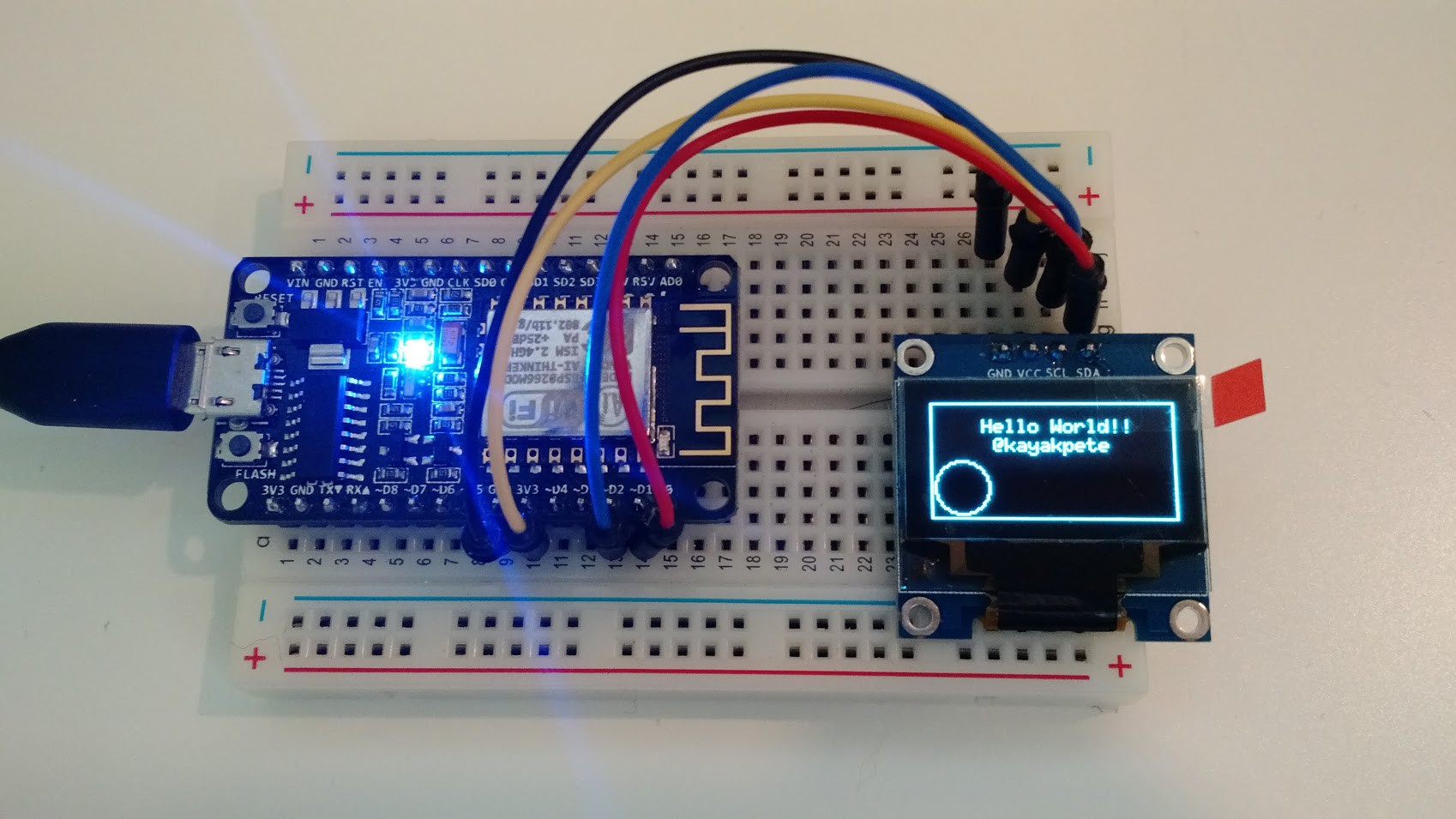-
1Step 1
Get nodemcu running on your ESP8266, and confirm access via ESPlorer. There's a nice how-to at http://www.esp8266.com/wiki/doku.php?id=loading_firmware
-
2Step 2
Wire up the display to the ESP-12e:
Connect the following ESP pins to the OLED pins.
ESP OLED GND GND 3V3 VCC D1 SDA D2 SCL ![]()
-
3Step 3
Load the following code to the ESP and run:
-- OLED Display demo -- March, 2016 -- @kayakpete | pete@hoffswell.com -- Hardware: -- ESP-12E Devkit -- 4 pin I2C OLED 128x64 Display Module -- Connections: -- ESP -- OLED -- 3v3 -- VCC -- GND -- GND -- D1 -- SDA -- D2 -- SCL -- Variables sda = 1 -- SDA Pin scl = 2 -- SCL Pin function init_OLED(sda,scl) --Set up the u8glib lib sla = 0x3C i2c.setup(0, sda, scl, i2c.SLOW) disp = u8g.ssd1306_128x64_i2c(sla) disp:setFont(u8g.font_6x10) disp:setFontRefHeightExtendedText() disp:setDefaultForegroundColor() disp:setFontPosTop() --disp:setRot180() -- Rotate Display if needed end function print_OLED() disp:firstPage() repeat disp:drawFrame(2,2,126,62) disp:drawStr(5, 10, str1) disp:drawStr(5, 20, str2) disp:drawCircle(18, 47, 14) until disp:nextPage() == false end -- Main Program str1=" Hello World!!" str2=" @kayakpete" init_OLED(sda,scl) print_OLED() -
4Step 4
Have a beer.
ESP8266 + OLED Display
An exercise of connecting the ESP-12 DevKit board running nodemcu to a 4 pin I2C OLED Display
 Pete Hoffswell
Pete Hoffswell
Discussions
Become a Hackaday.io Member
Create an account to leave a comment. Already have an account? Log In.